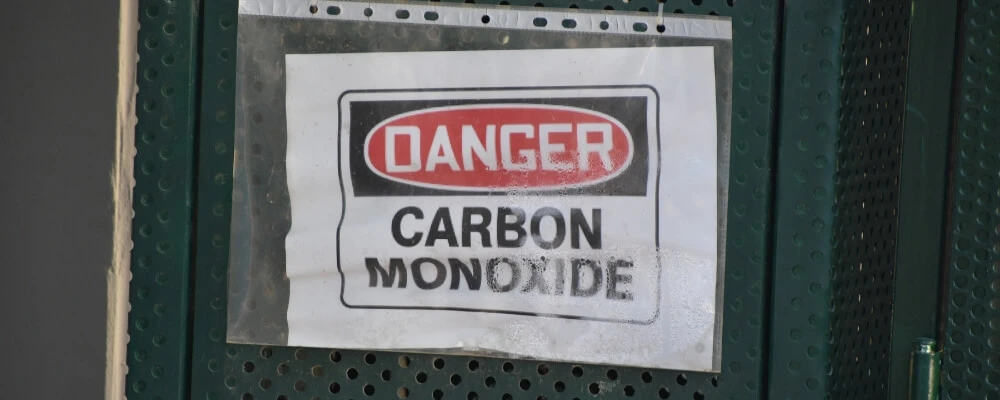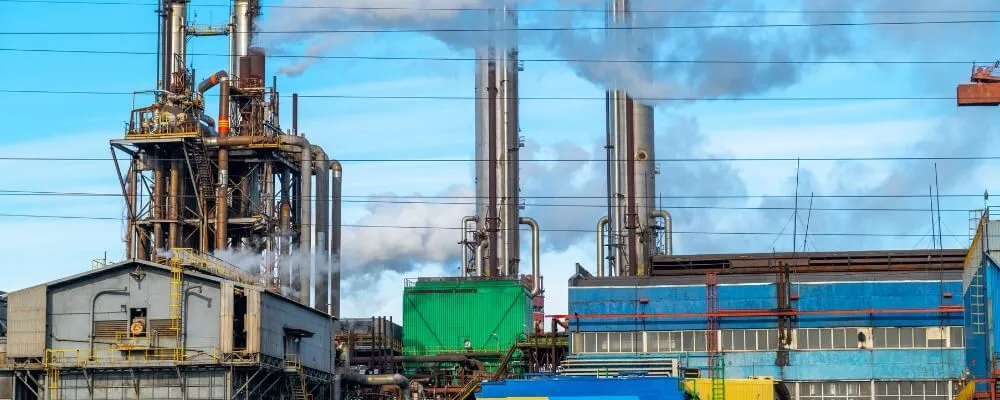In today’s industrialized world, gases play a pivotal role in a myriad of operations, from manufacturing to energy production. While these gases are indispensable, they also introduce a spectrum of hazards that can jeopardize the safety and well-being of workers. Recognizing these potential dangers is the first step toward creating a safer work environment.
This blog delves into the ten most common gas-related hazards encountered in workplaces and offers practical solutions to mitigate these risks. Whether you’re an employer aiming to fortify your workplace safety protocols or an employee seeking to understand the dangers around you, this guide provides a comprehensive overview to ensure that gas-related operations are conducted safely and efficiently. Let’s embark on this journey to create a safer and more informed workspace for all.
10 Common Gas-Related Hazards In The Workplace
Gas-related hazards in the workplace can pose serious threats to the safety and health of employees. Here are ten common gas-related hazards that can be encountered in various work environments:
1. Gas Leaks
Gas leaks are among the most common and dangerous hazards in workplaces, especially in industries that deal with flammable gases. When gas escapes from pipelines, tanks, or equipment, it can form a flammable atmosphere. If this atmosphere encounters an ignition source, such as a spark or open flame, it can lead to fires or even explosions.
The severity of the hazard depends on the type and quantity of the gas, as well as the presence of ignition sources. To counteract this risk, workplaces must conduct regular inspections and maintenance of all gas-related infrastructure. This ensures that any potential sources of leaks are identified and rectified promptly.
2. Oxygen Deficiency
Workplaces that store or use large quantities of gases face the risk of oxygen levels dropping below the safe threshold. This is particularly concerning in confined spaces where ventilation may be limited. When oxygen levels drop significantly, workers can suffocate due to the lack of breathable air.
Monitoring oxygen levels, ensuring proper ventilation, and training workers to recognize the signs of oxygen deficiency are critical preventive measures.

3. Toxic Gas Exposure
Industrial processes, especially in sectors like petrochemicals, manufacturing, and waste treatment, can release toxic gases. When inhaled, these gases can cause a range of health issues, from mild respiratory irritation to severe lung damage. Knowing the difference between carbon monoxide and carbon dioxide can help workers respond appropriately to different types of gas-related risks.
The impact on health largely depends on the type of gas and its concentration. Continuous monitoring of air quality and ensuring workers wear appropriate respiratory protective equipment can help mitigate this risk.
4. Carbon Monoxide Poisoning
Carbon monoxide is a by-product of incomplete combustion. Whether from machinery, vehicles, or faulty heating equipment, this gas is particularly treacherous because it’s odorless and colorless.
When inhaled, it interferes with the blood’s ability to transport oxygen, leading to symptoms like dizziness, weakness, and even death in high concentrations. Installing carbon monoxide detectors and ensuring proper ventilation are essential preventive measures.
5. Explosions
Certain gases, including propane, methane, and hydrogen, have explosive properties. If these gases accumulate and reach a certain concentration, even a small spark can trigger a powerful explosion. This risk underscores the importance of proper storage, handling, and ventilation of explosive gases to prevent accumulation.
6. Corrosive Gases
Gases like chlorine and ammonia have corrosive properties. When they come into contact with the skin, they can cause chemical burns. If inhaled, they can damage the respiratory system’s lining. Workplaces dealing with corrosive gases must have proper storage and handling procedures, and workers should be equipped with suitable protective gear.
7. High-Pressure Gas Cylinders
Storing gas under high pressure increases the amount of gas that can be held in a container, but it also poses risks. If a cylinder is damaged, exposed to excessive heat, or not handled correctly, it can explode, releasing a massive amount of energy. Proper storage, handling, and training are vital to prevent such incidents.
8. Asphyxiation
Inert gases like nitrogen and argon are not toxic, but they can displace oxygen in an environment, especially in confined spaces. Workers might not notice the gradual decrease in oxygen levels, which can lead to sudden unconsciousness and, in severe cases, death. This form of asphyxiation is particularly insidious because inert gases are often odorless and colorless, making their presence undetectable without specialized equipment.
To prevent such incidents, it’s essential to monitor oxygen levels in areas where inert gases are used, especially in confined spaces. Additionally, workers should be trained to recognize the early symptoms of asphyxiation, such as dizziness, shortness of breath, and confusion.
9. Reactive Gases
Some gases are highly reactive when they come into contact with certain substances. For instance, pure oxygen can intensify a fire, causing materials like oil and grease to ignite spontaneously. Other gases might react with chemicals or materials commonly found in workplaces, leading to unexpected fires or explosions.
Understanding the reactivity of gases used in a workplace is crucial. Proper storage, separation of incompatible substances, and training can help prevent dangerous reactions.
10. Cold Burns and Frostbite
Liquefied gases, when released from their containers, undergo rapid expansion. This process causes a significant drop in temperature, and the gas becomes extremely cold. Direct contact with these super-cooled gases, or even their containers, can result in cold burns or frostbite. The skin can freeze instantly upon contact, leading to tissue damage.
Workers handling liquefied gases should be equipped with appropriate personal protective equipment, such as insulated gloves and face shields, to prevent direct contact. Moreover, training sessions should emphasize the importance of handling these materials with caution.

How To Mitigate These Gas-Related Hazards
Mitigating gas-related hazards in the workplace requires a combination of preventive measures, safety protocols, and continuous training. Here’s how to address each of the previously mentioned hazards:
1. Gas Leaks:
- Regular Inspections: Conduct routine checks of all gas lines, connections, and equipment to identify and repair potential leaks.
- Safety Equipment: Install gas detectors and alarms that can alert workers to the presence of gas leaks.
- Emergency Shut-off: Ensure that emergency shut-off valves are easily accessible and functional.
2. Oxygen Deficiency:
- Ventilation: Ensure adequate ventilation in areas where gases are stored or used, especially in confined spaces.
- Oxygen Monitors: Use oxygen monitors to detect and alert when oxygen levels drop below safe thresholds.
3. Toxic Gas Exposure:
- Exhaust Systems: Install effective exhaust and ventilation systems to remove toxic gases.
- Personal Protective Equipment (PPE): Provide workers with appropriate respiratory protection and ensure its proper use.
- Safety Data Sheets (SDS): Maintain and make accessible SDS for all chemicals and gases used, detailing their properties and safety measures.
4. Carbon Monoxide Poisoning:
- CO Detectors: Install carbon monoxide detectors in areas at risk and ensure they are regularly tested and maintained.
- Regular Maintenance: Ensure that combustion equipment is properly maintained to minimize CO production.
5. Explosions:
- Proper Storage: Store flammable gases away from ignition sources and in approved containers.
- Safety Training: Train workers on the explosive properties of gases and the importance of avoiding ignition sources.
6. Corrosive Gases:
- Chemical Storage Cabinets: Store corrosive gases in appropriate cabinets that can contain leaks.
- PPE: Provide chemical-resistant gloves, eyewear, and other necessary protective gear.
7. High-Pressure Gas Cylinders:
- Storage Protocols: Store cylinders upright, secured with chains or straps, and away from heat sources.
- Handling Training: Train workers on safe handling, transportation, and storage of high-pressure cylinders.
8. Asphyxiation:
- Safety Protocols for Confined Spaces: Implement strict entry and exit protocols for confined spaces, including continuous monitoring of oxygen levels.
- Ventilation: Ensure that areas with inert gases have proper ventilation to prevent oxygen displacement.
9. Reactive Gases:
- Separation: Store reactive gases separately from materials with which they might react.
- Safety Training: Educate workers about the reactivity of certain gases and the substances they should avoid contact with.
10. Cold Burns and Frostbite:
- PPE: Provide insulated gloves, face shields, and other protective equipment for workers handling liquefied gases.
- Safety Protocols: Implement protocols for the safe transfer and handling of liquefied gases to prevent accidental releases and direct contact.
11. Safety Training and Education:
- Regular Workshops: Conduct regular safety workshops and training sessions to keep workers informed about the potential hazards of gases and how to handle them safely.
- Emergency Drills: Organize periodic emergency response drills to ensure that workers know how to react in case of gas leaks, fires, or other emergencies.
- Clear Signage: Display clear and visible signs indicating the presence of hazardous gases, storage areas, and emergency shut-off points.

12. Emergency Response Plan:
- Plan Development: Develop a comprehensive emergency response plan tailored to the specific gas-related hazards present in the workplace.
- First Aid: Ensure that first aid stations are equipped to handle gas-related injuries and that personnel are trained in administering first aid for such incidents.
- Emergency Contacts: Maintain a list of emergency contacts, including local fire departments, medical facilities, and gas suppliers, and ensure it’s easily accessible.
13. Equipment Maintenance:
- Routine Checks: Regularly inspect and maintain equipment, especially those that store, transport, or use gases, to ensure they are in good working condition.
- Replacement: Replace worn-out or damaged equipment promptly to prevent malfunctions that could lead to gas-related incidents.
14. Ventilation Systems:
- Regular Maintenance: Ensure that ventilation systems are regularly inspected and maintained to function effectively.
- Upgrades: Upgrade ventilation systems as needed to handle the volume and type of gases used in the workplace.
15. Personal Protective Equipment (PPE):
- Proper Fit: Ensure that PPE fits each worker correctly and is comfortable to wear for extended periods.
- Regular Inspection: Check PPE regularly for signs of wear or damage and replace as necessary.
16. Safety Protocols and Procedures:
- Documentation: Maintain up-to-date safety protocols and procedures and ensure they are easily accessible to all workers.
- Review: Periodically review and update safety protocols based on new information, incidents, or changes in operations.
17. Communication:
- Open Channels: Encourage workers to report any concerns or potential hazards they identify. An open communication channel can help in early detection and mitigation of risks.
- Feedback Loop: Implement a system where feedback from workers is used to improve safety measures and protocols.
By implementing these measures and fostering a culture of safety, workplaces can significantly reduce the risks associated with gas-related hazards. It’s essential to remember that safety is an ongoing process, and continuous evaluation and adaptation are necessary to address emerging challenges and changes in operations.
Conclusion
In conclusion, the dynamic nature of gases and their widespread use in various industries underscores the importance of understanding and addressing the associated hazards. While the challenges posed by gas-related operations are undeniable, with informed strategies and proactive measures, these risks can be substantially reduced.
Employers and employees alike must collaborate, emphasizing continuous education, regular equipment maintenance, and the implementation of robust safety protocols. By fostering a culture of safety and vigilance, we can ensure that the invaluable benefits of gases are harnessed without compromising the well-being of the workforce.
Remember, a safe workplace is not just a regulatory requirement but a testament to the value placed on human life and well-being. Let’s commit to making safety a non-negotiable standard in every gas-related endeavor.

